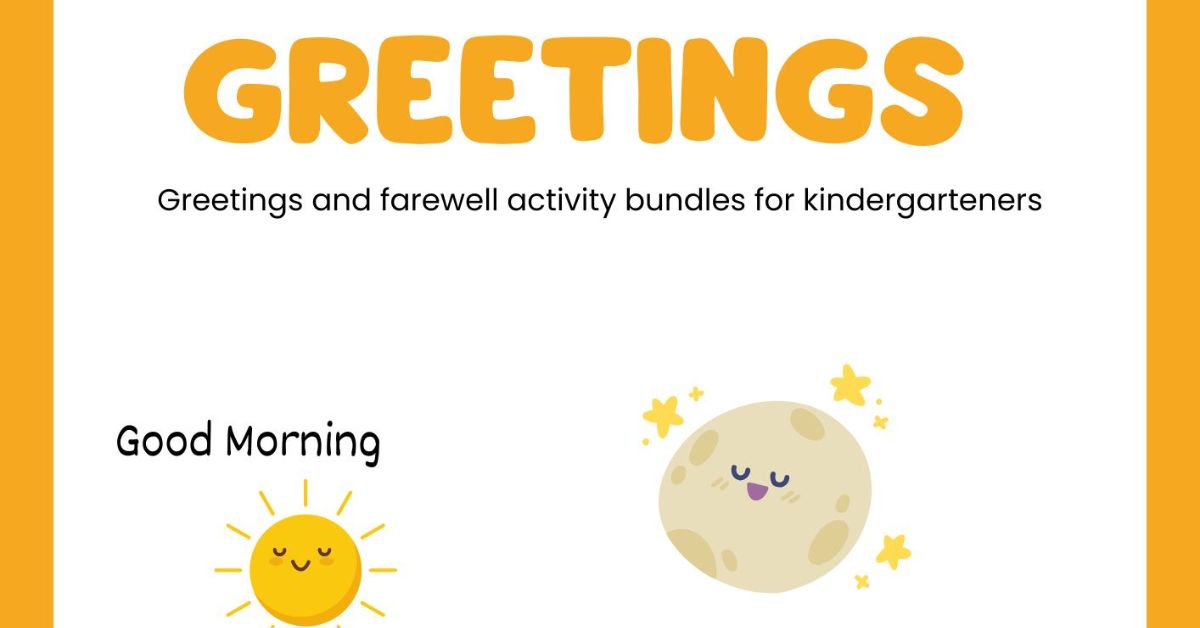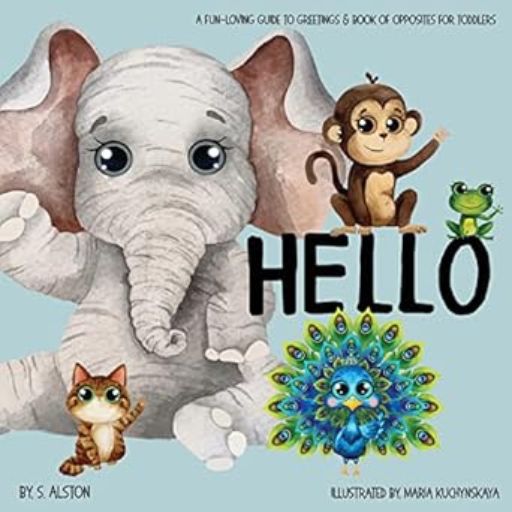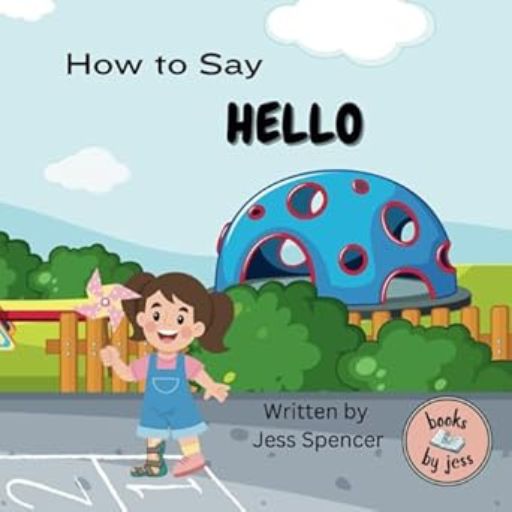Greeting someone isn’t just a formality; it’s a way of showing that you value and respect them. Think about it: when someone, whether young or old, doesn’t respond to your greeting, it can sting a little. This is why teaching kids the importance of greetings is essential—it lays the groundwork for mutual respect and smooth social interactions.
Unfortunately, social skills don’t come naturally, and learning to greet takes time, patience, and the right approach. But with the right tools, you can make mastering greetings an exciting adventure rather than a boring chore. In this post, we’re diving into 11 creative, engaging greetings activities for preschoolers that will help your child learn to respond warmly and confidently, turning this essential skill into a fun part of their day.
Easy and Fun Greetings Activities for Preschoolers
1. Greeting Circle Time
Have the children sit in a circle. Start with one child who says “Good morning,” “Hello,” or “Hi” to the person on their right. That child responds, then turns to their right and says a new greeting to the next person.
Continue around the circle until everyone has had a turn. To make it more engaging, try adding a question like “How are you? Or how do you do?”
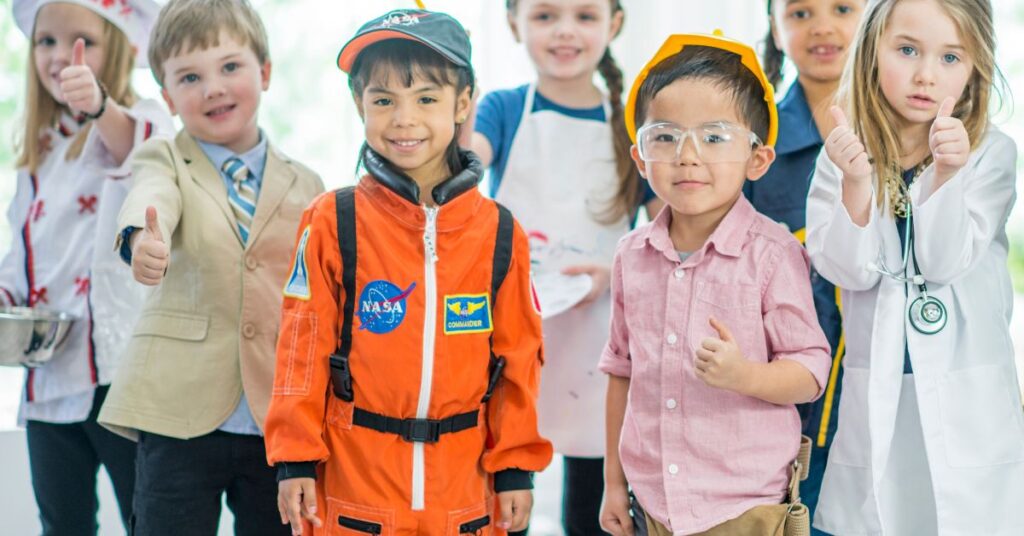
2. Role-Play Scenarios
Role play is a fun way for kids to use their imagination and creativity, so expect this greetings activity to be a hit.
Set up different roles for your preschoolers by creating simple props representing careers like engineering, teaching, or medicine. Each child picks a prop and practices a greeting as someone in that role would.
For example, a child role-playing as a president might begin with “Dear Americans,” while a doctor could say, “Good morning, how are you feeling today?”
3. Greetings, Song and Dance
Music is a great way to incorporate learning. Get your creative juices flowing and compose a simple greeting song incorporating all the greetings you want to teach.
Read: Music Activities for 4th Graders
For example, “Hello, hello, how are you?” while waving or clapping. If you don’t want the trouble of coming up with a, then you can use these ideas:
4. Greeting Around the World
For the “Greetings Around the World” activity, introduce preschoolers to different greetings from various cultures.
Start by teaching simple greetings like “Bonjour” for French, “Hola” for Spanish, and “Habari yako” for Swahili. Use images of flags or traditional attire to make each greeting memorable and connect it to the culture.
You could even have a “greeting of the week” where, each day, the class practices a new greeting from around the world.
This activity helps kids understand cultural diversity and appreciate how people greet each other differently. You can use the book “Say Hello in All Languages or Hello & Goodbye Around the World for ideas on which cultures to include.
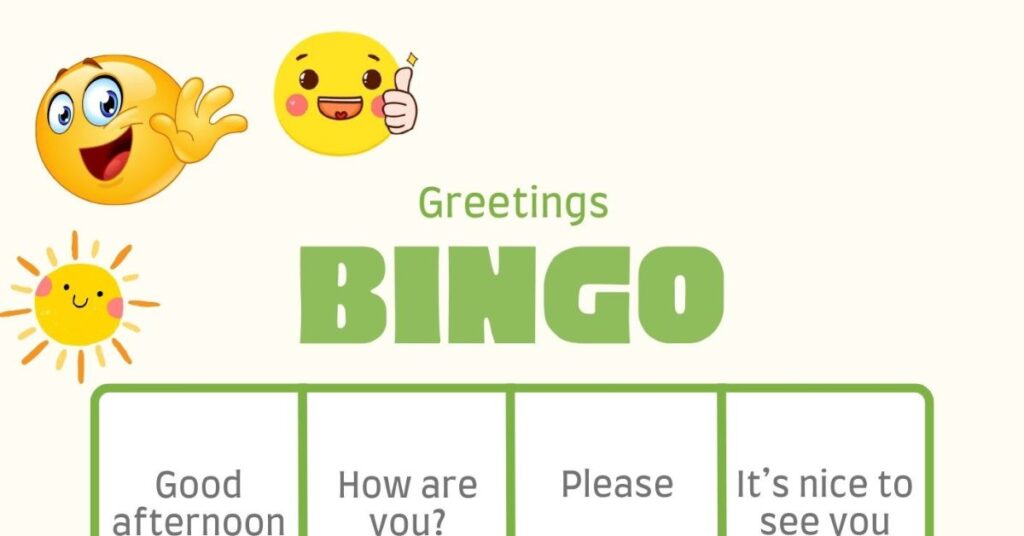
5. Greeting Bingo
For “Greeting Bingo,” create Bingo cards featuring various greetings like “Hello,” “Good morning,” “Hi,” and “Good evening.”
Each child receives a Bingo card and listens as you call out greetings. If they have the greeting on their card, they mark it off. The first child to complete a row or column shouts “Bingo!” and wins.
You can add a twist by asking children to respond to each greeting before marking it, reinforcing their listening and response skills in a fun way.
You can get started by downloading our Greetings Bingo Printables. 4 Sheets to get you started. Or scroll down to grab the full set.
6. Pass the Ball
Kids love games because they are fun and interactive, making learning feel like play rather than work. That’s what the pass-the-ball greetings activity helps you achieve.
First, introduce a ball and gather all the preschoolers in a circle. Then play some music while they pass the ball around.
When the music stops, the child holding the ball answers a greeting prompt like “How do you do?” or says a greeting such as “Hi!” to which someone else can respond.
‘Pass the ball’ encourages active participation and helps reinforce their greeting and response skills in a playful, engaging way.
Greetings Reading list
7. Nice to Meet You
This game introduces a little competition in the class while encouraging teamwork. To play:
- Choose flashcards with words or math problems and arrange them in a parallel line
- Divide your class into two groups/teams
- Have each team line up on each side of the flashcards
- As they move toward the center, they solve the sum or read the word on the flashcards
- When they meet in the middle, they exchange a greeting and response (e.g., “Hello!” “Hi!”)
- Once they reach the end, they play rock, paper, scissors. The winning student earns a point for their team
So, what happens when someone gets a wrong answer or calculates a sum incorrectly?
In such a case, another teammate replaces them. However, the new player must answer all questions correctly to continue.
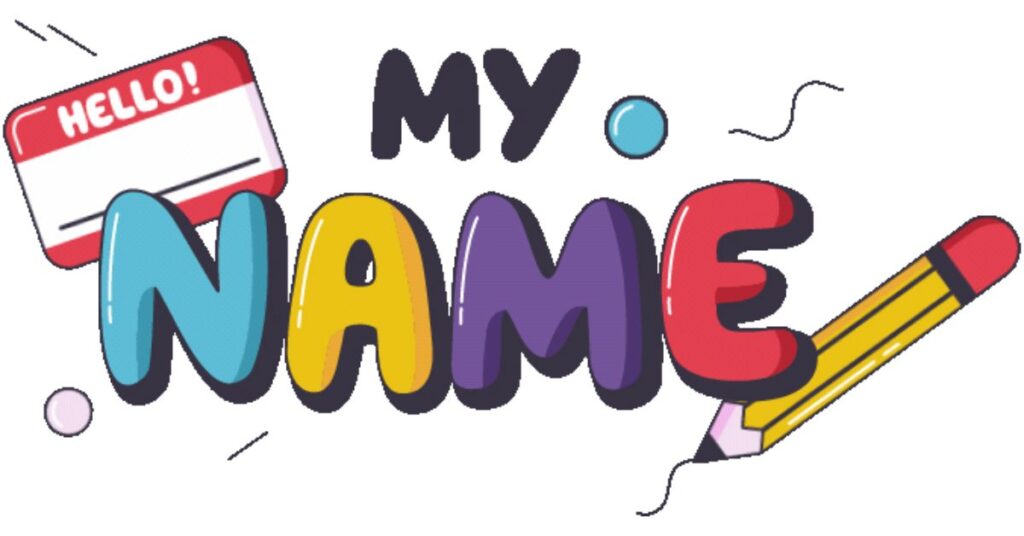
8. The Name Game
Have one child face away from the group so they can’t see the others. Another child stands up and greets the group, saying, “Hello, my name is John or Good afternoon, I am Sarah.”
Now, the child facing away has to guess who is speaking. Kids can use their real voice or impersonate someone else in the class. This adds to the fun of guessing whether they’re telling the truth or pretending to be someone else.
9. How Are You?
Imagine this game as a giant “snakes and ladders” on the floor, filled with greetings! Start by printing different greetings on pieces of paper, then place them on the floor in a fun, winding pattern.
To play, students take turns rolling a die and jumping forward based on their roll. When they land on a greeting, they respond aloud with a matching reply.
To add more fun, incorporate emojis! For example, if a student lands on “How are you feeling?” they can say, “I’m excited!” while holding an emoji.
10. Greetings Mingle Game
Like musical chairs, children walk around until the music stops, then greet the nearest person. This encourages spontaneous greetings and builds social comfort.
For a twist, tape greetings to each student’s back. Let them mingle, and when you say “stop,” they pair up and greet each other based on what’s written on their backs. Rotate several times so everyone gets to practice many greetings.
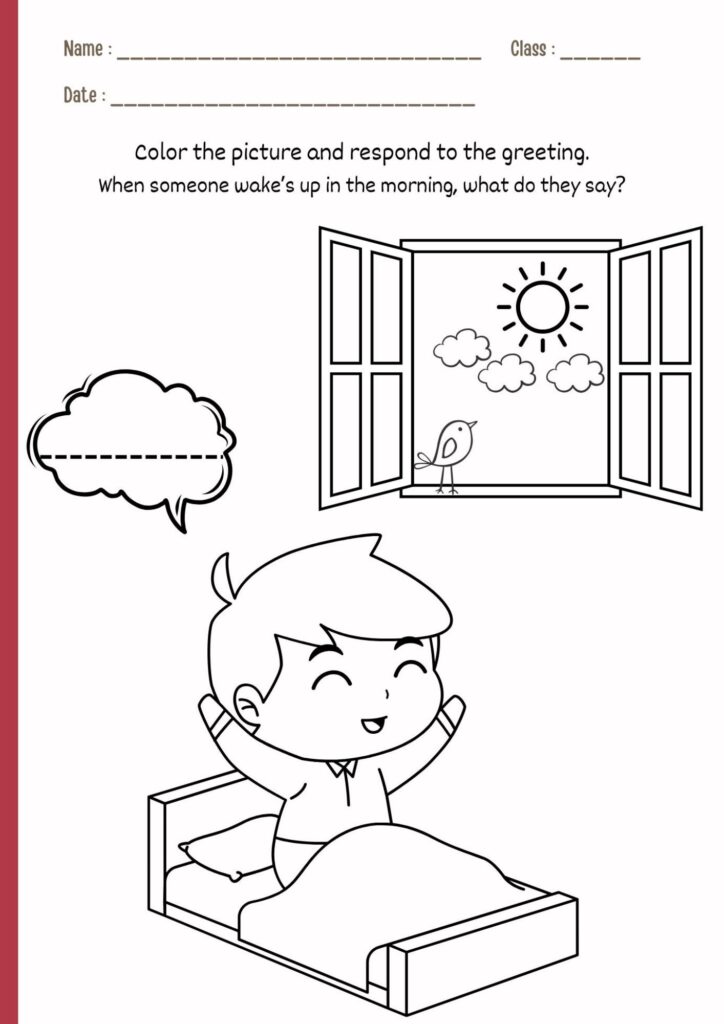
11 Use Greetings Printable worksheet
Printables are an excellent way to teach children social skills through interactive and hands-on activities. These greetings worksheets are designed specifically to make learning greetings fun and approachable for preschoolers, combining visual, sensory, and practical elements.
Here’s what’s included in the bundle:
- Greeting Images with Names: Kids see common greetings paired with colorful images, helping them associate phrases with visual situations.
- Matching Game: Matching greeting words with corresponding pictures enhances recognition and comprehension.
- Day and Night Coloring: Children choose greetings that fit specific times (e.g., “Good morning” or “Good night”) as they color, making greetings part of their routine.
- Greeting Response Activity: Kids color an image and complete conversations by creating responses, boosting conversational skills.
- Time of Day Dice Game: Rolling dice with different greetings encourages kids to practice their responses naturally and with variety.
- Handwriting Practice: Tracing greetings helps children develop fine motor skills and recognize social phrases.

Download greetings activities worksheets for preschoolers. This bundle contains 17 worksheets to help preschoolers master greetings. Available for $4.5
Tips for Reinforcing Greetings Daily
To encourage greeting skills, start by modeling greetings daily, like “Good morning” or “Hello.” Encourage children to practice greetings in various settings, such as saying “Thank you” or “Goodbye” in stores, helping them adapt to different social cues.
Use visual reminders, like greeting posters or flashcards near the door, to prompt them when to use phrases like “Hello” and “Goodbye.” Reinforce their use of greetings with praise or small rewards, and try role-playing different scenarios, such as meeting a new friend.
Greetings Reading List

